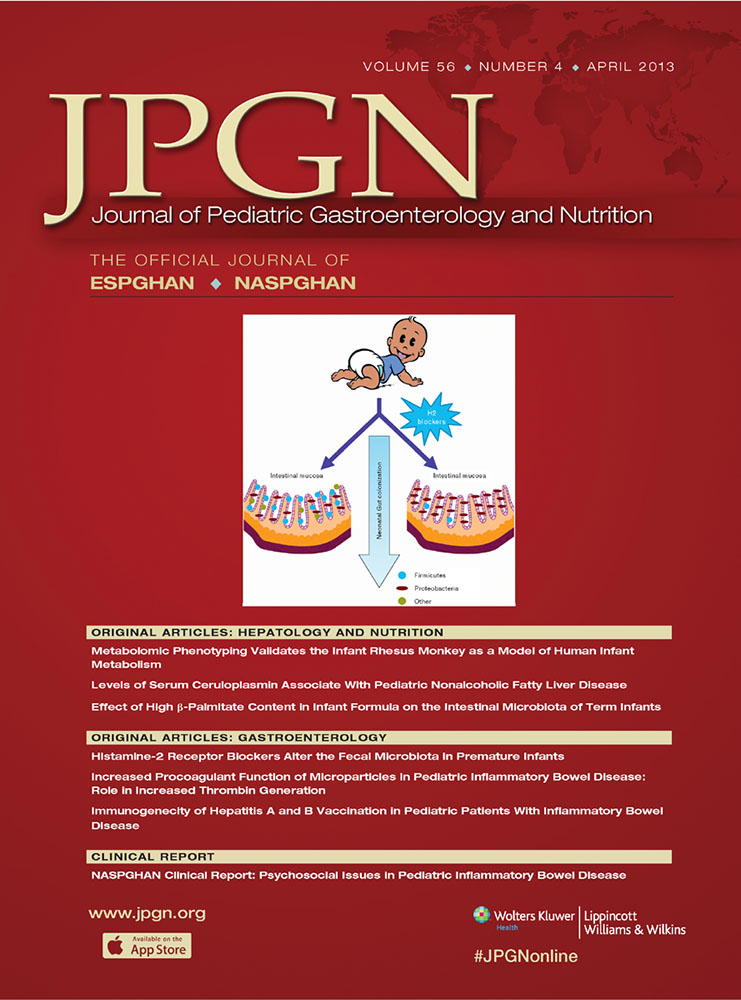Levels of Serum Ceruloplasmin Associate With Pediatric Nonalcoholic Fatty Liver Disease
The authors report no conflicts of interest.
ABSTRACT
Objectives:
Nonalcoholic fatty liver disease (NAFLD) in adolescents and children is rapidly becoming one of the most common causes of chronic liver disease worldwide. NAFLD varies from simple fatty liver to nonalcoholic steatohepatitis (NASH) with possible fibrosis. Several studies suggest that oxidative stress plays a central role in several metabolic abnormalities and cellular damage that characterize NAFLD. We investigated whether transition metals and their related proteins were related to NAFLD symptoms and their underlying processes.
Methods:
We measured copper, iron, ceruloplasmin (Cp) concentration and activity, transferrin (Tf), ferroxidase activity, and ferritin, and we calculated Tf saturation and Cp to Tf ratio (Cp/Tf) as an index of the activity of the antioxidant Cp-Tf system in 100 children with biopsy-proven NAFLD. Pediatric patients were grouped by nonalcoholic fatty liver disease score (NAS) ≥ 5 (30 subjects) and NAS < 5 (70).
Results:
Cp distinguished children with NAS ≥ 5 from those with NAS < 5 with an accuracy of 82%. Specifically, a receiver operator characteristics curve showed that a cutoff of 28.6 mg/dL separated NAS ≥ 5 from NAS < 5 with a specificity of 92% and a sensitivity of 76%. The Cp/Tf ratio, as well as copper concentration and Cp activity, decreased in the NAS ≥ 5 group, pointing out an imbalance in metal regulation. Either copper or Cp concentrations were lower in subjects having ballooning.
Conclusions:
Serum antioxidant capacity owing to Cp failure is strongly associated with NAFLD-related damage. Further studies are, however, required to clarify the role of Cp in NAFLD pathogenesis and to evaluate its potential application as diagnostic marker.




